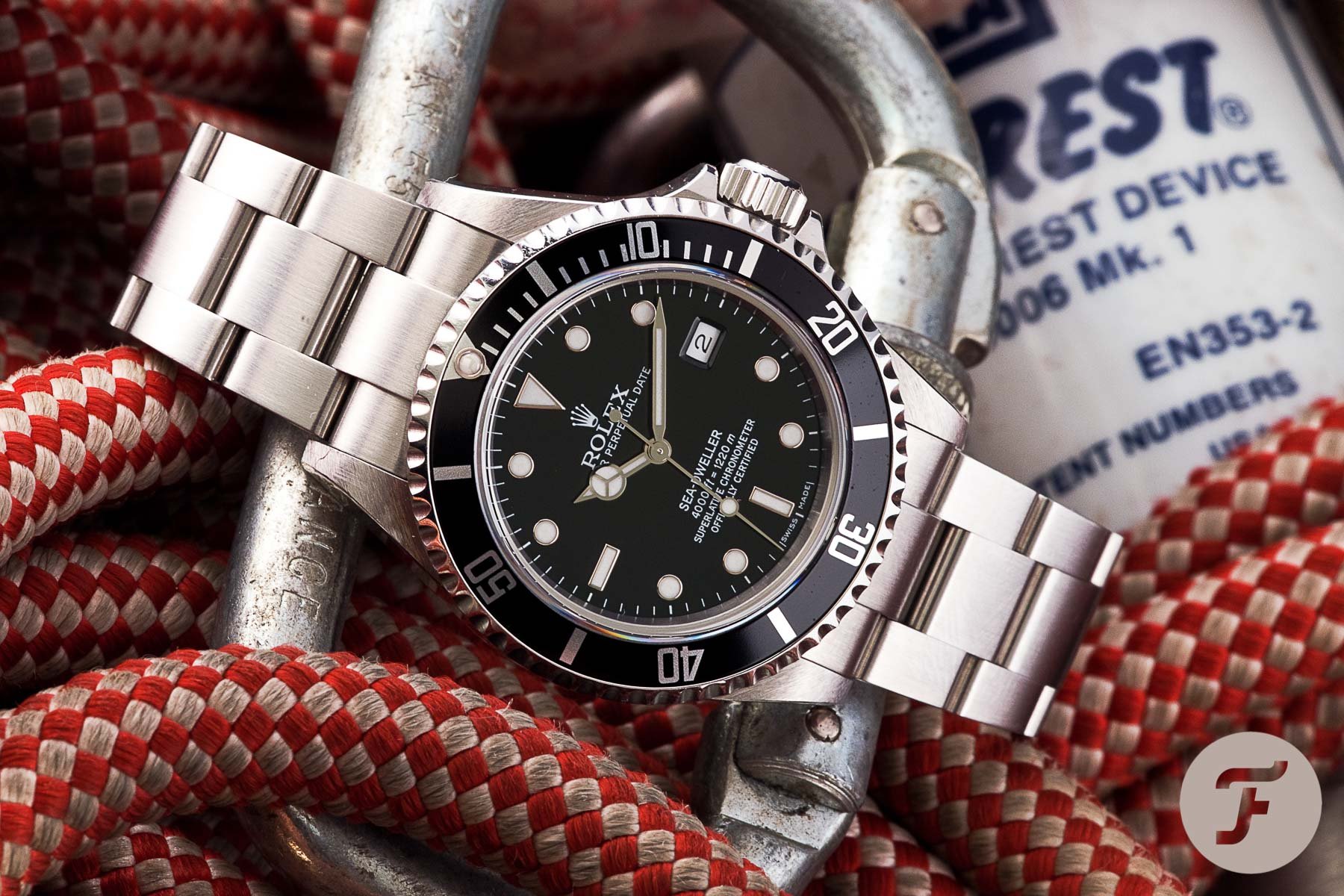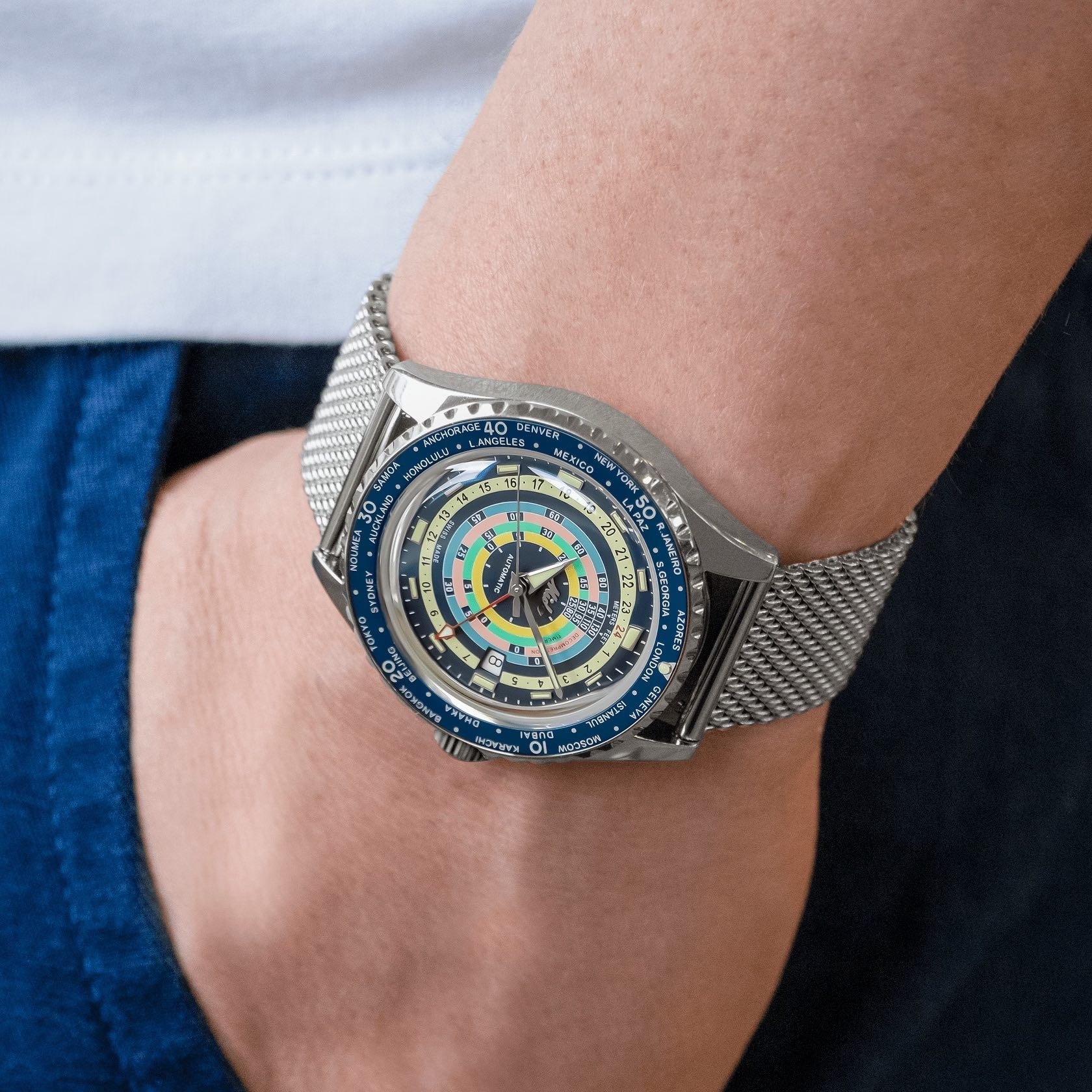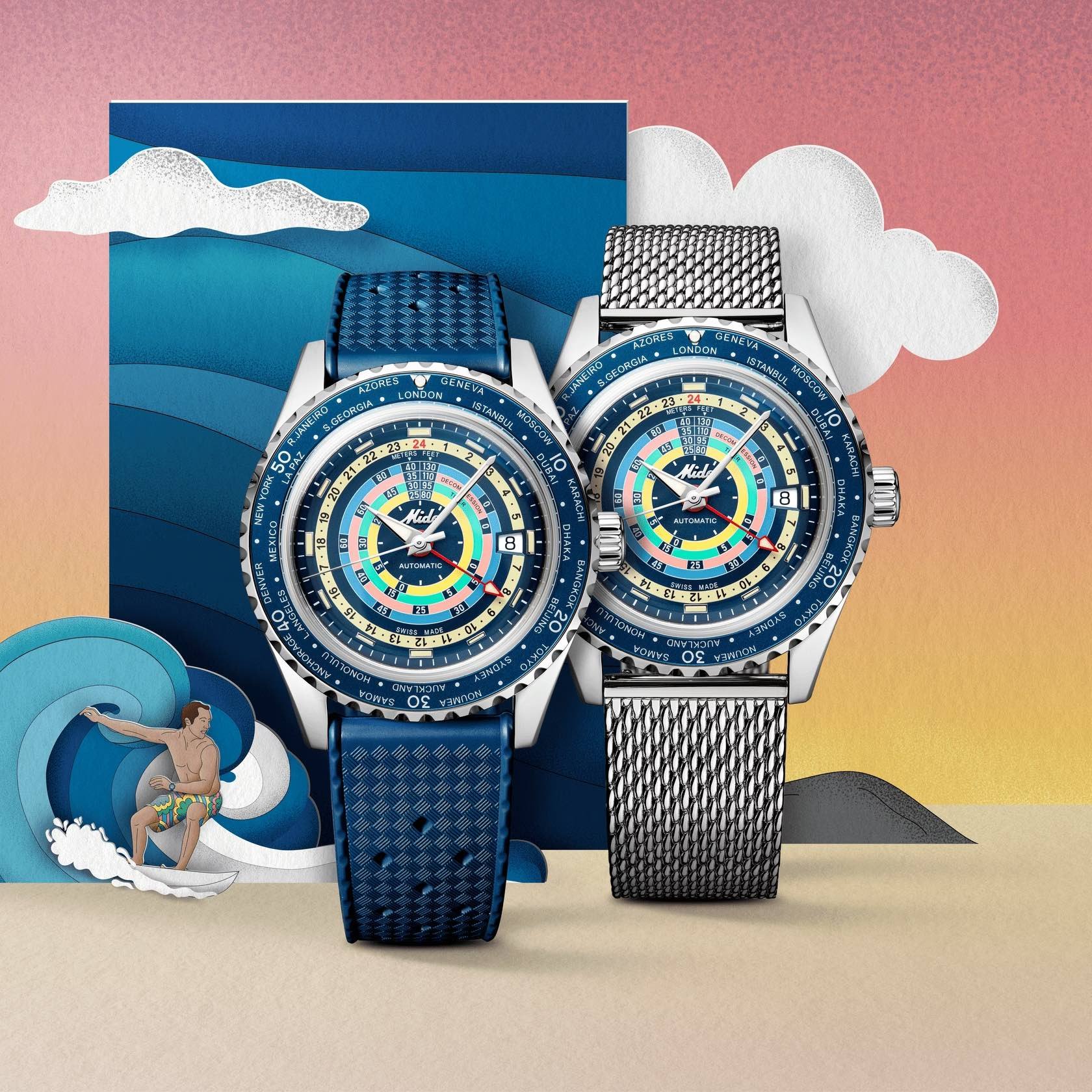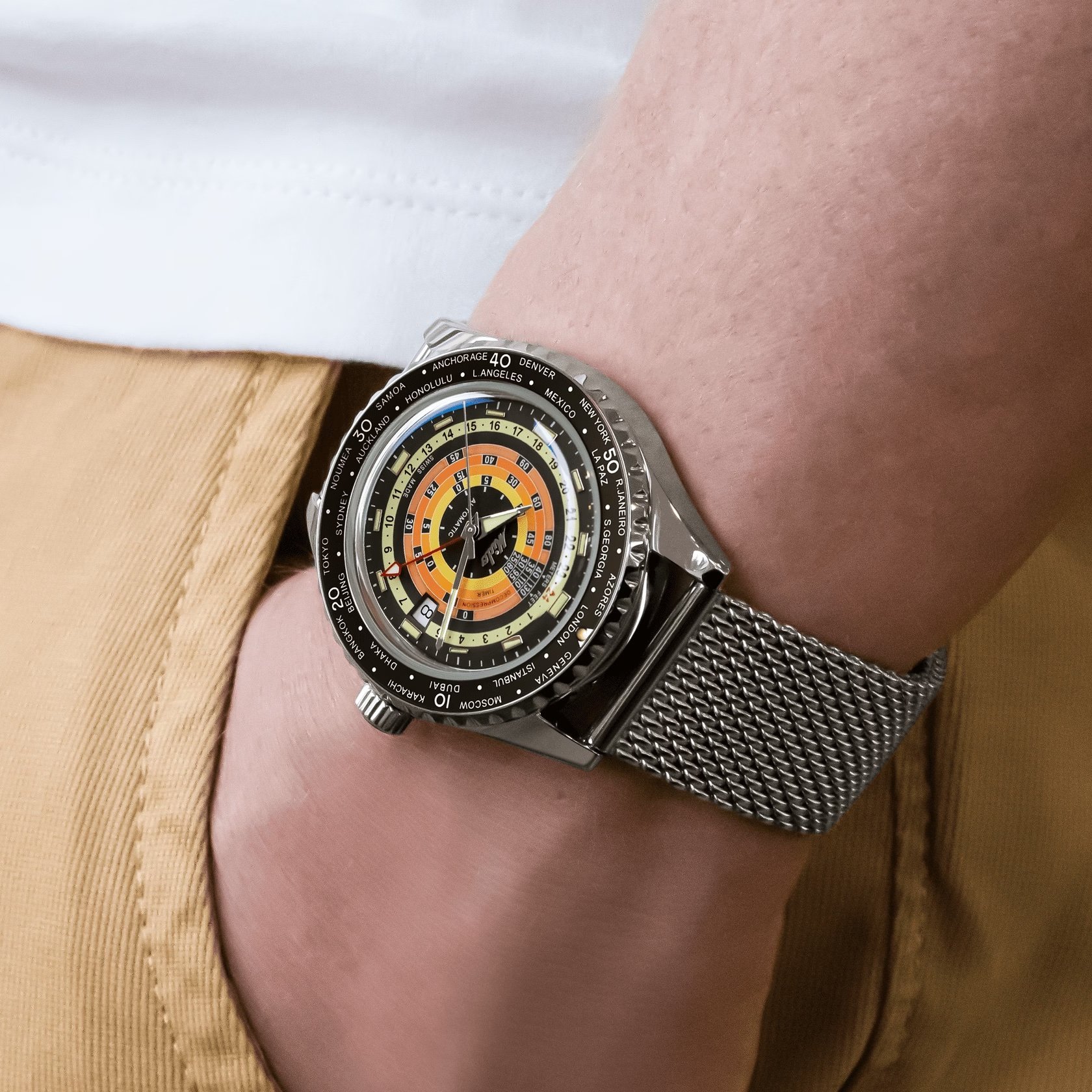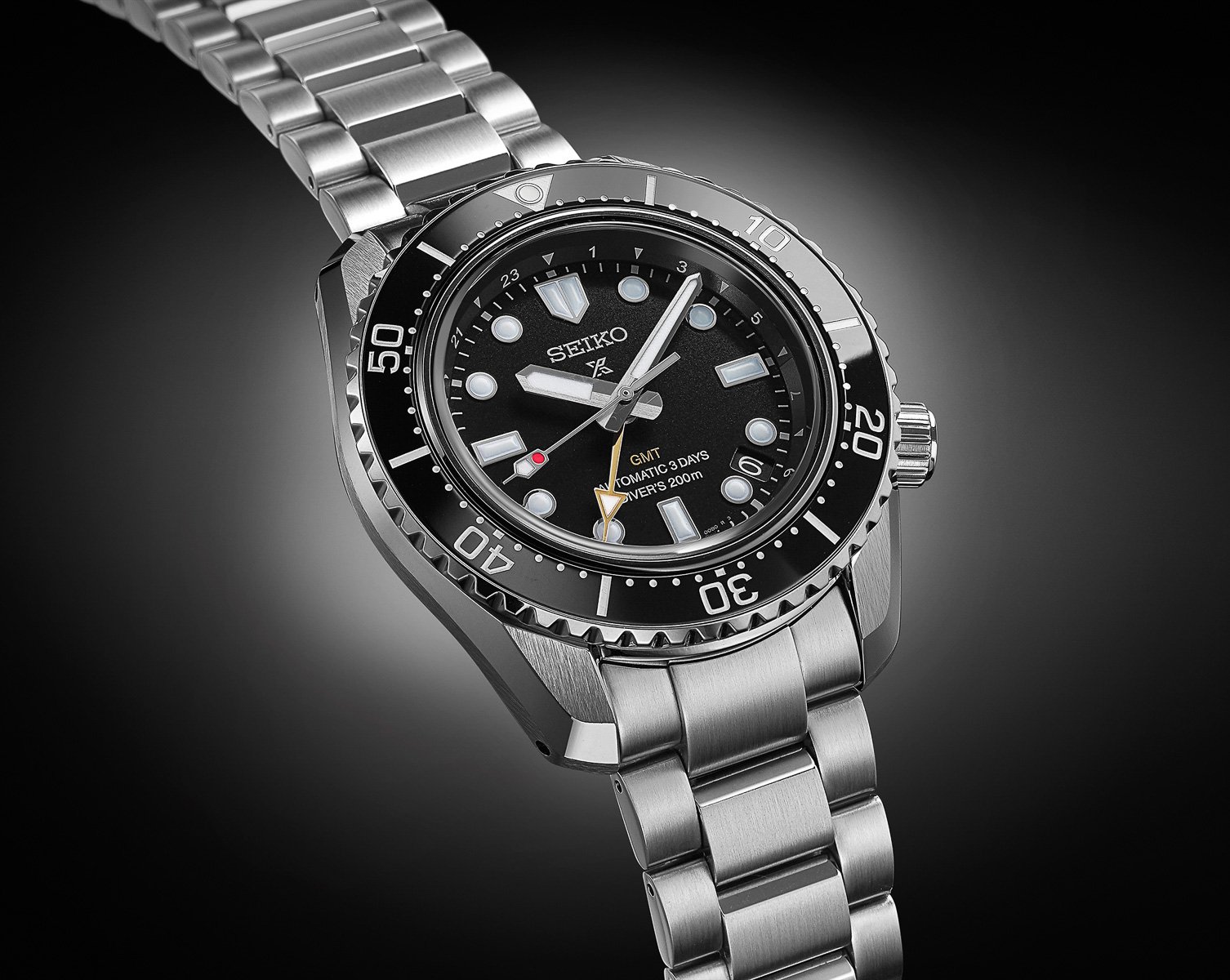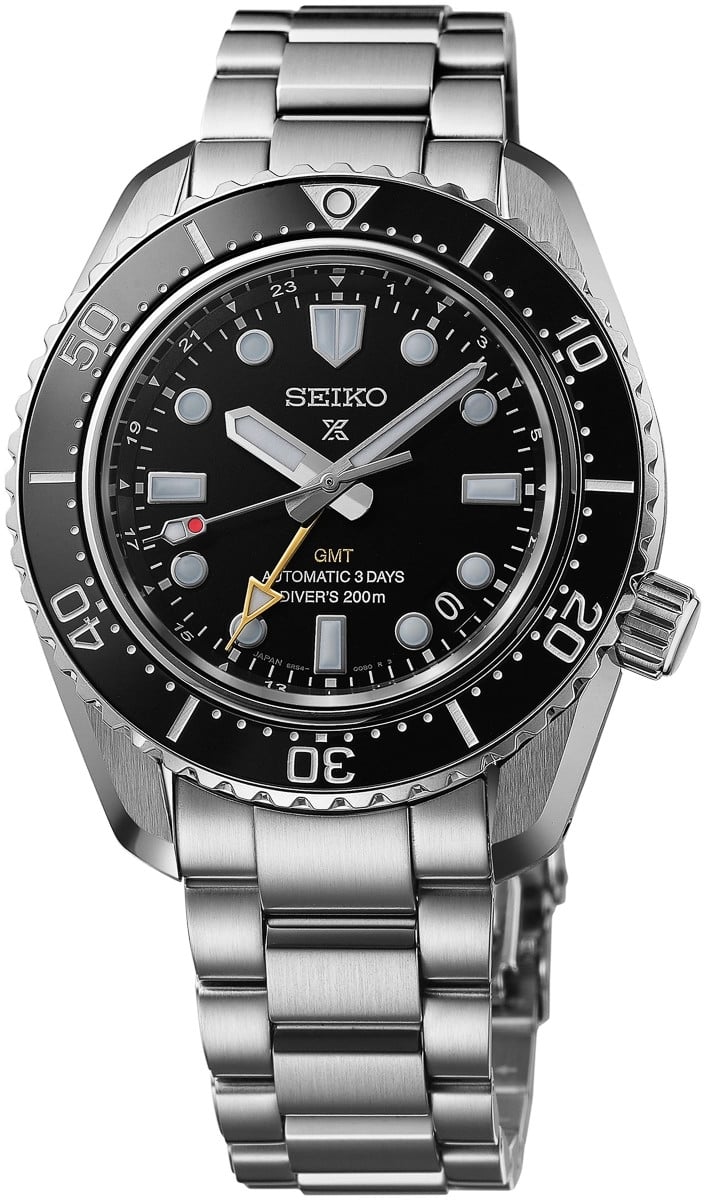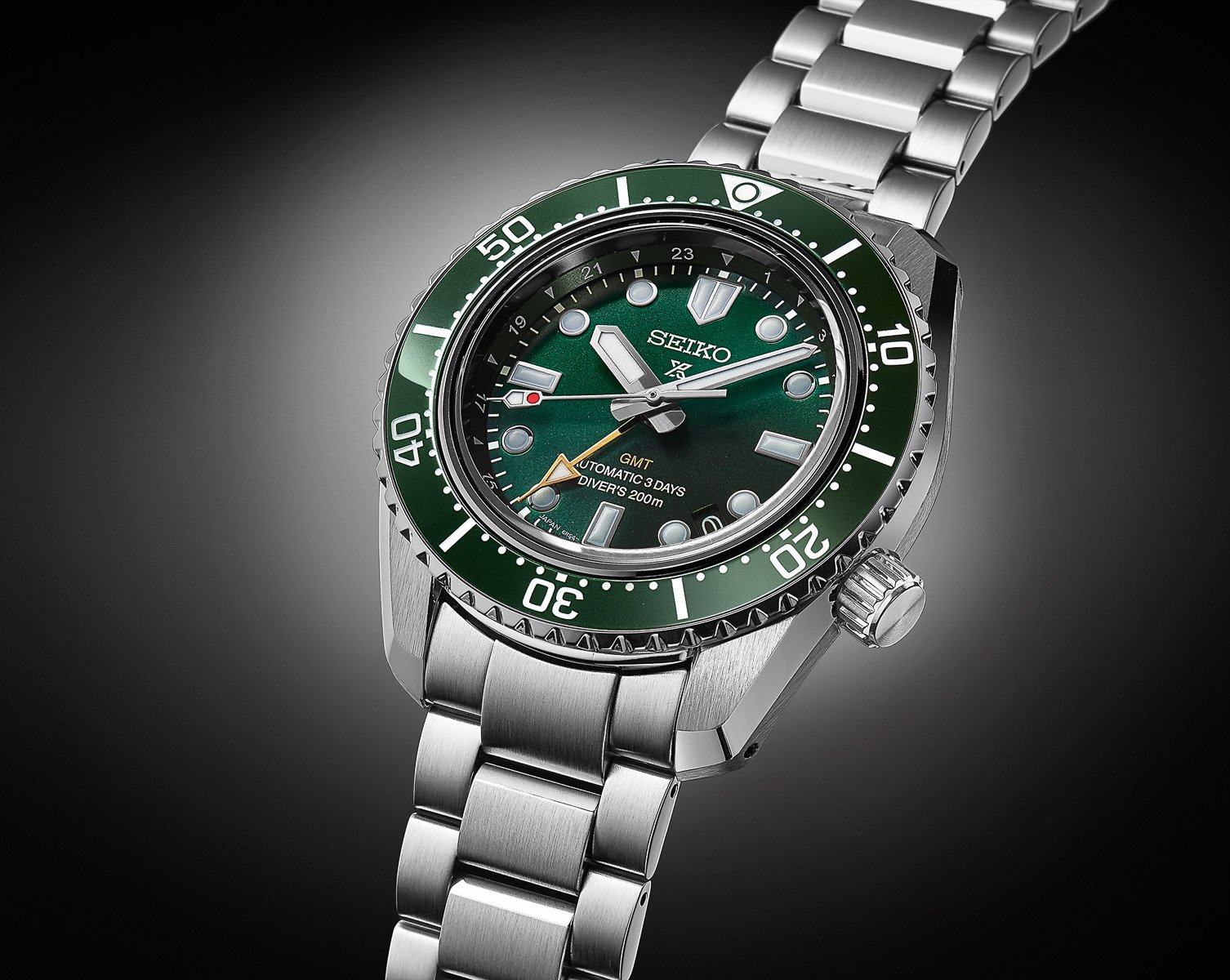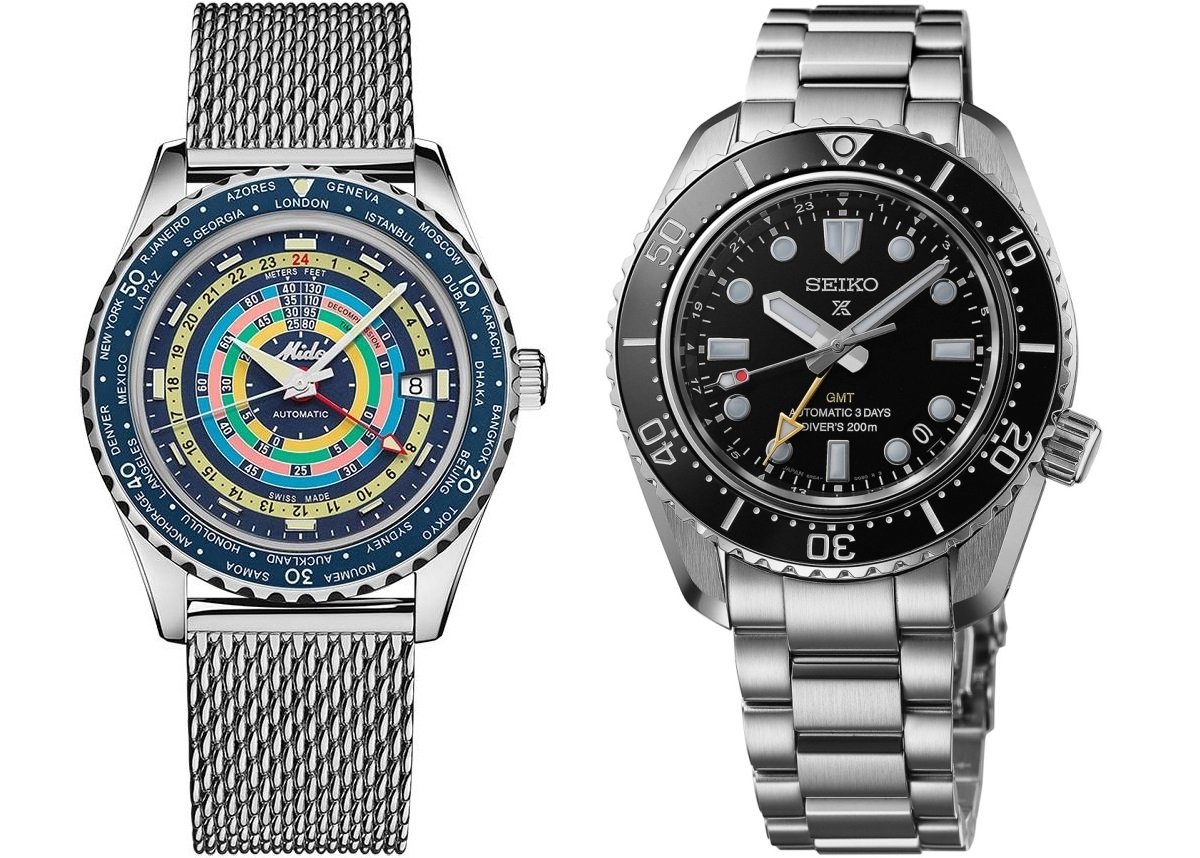Sunday Morning Showdown: Mido Ocean Star Decompression Worldtimer Vs. Seiko SPB383 “Mini Marinemaster” GMT
GMT watches are hot! And that must be the exact reason why both Seiko and Mido have added a GMT complication to one of their classic divers. For Seiko, it also counts as the introduction of an all-new GMT movement in the 6R series. And for Mido, it actually marks the first time that the brand has released a standard-production Ocean Star GMT in a size smaller than 44mm. Let’s take a look at both the Seiko SPB383 and the Mido Ocean Star Decompression Worldtimer and see which one of the two brand-new GMT divers is your favorite.
In some respects, these two watches are quite similar. Both trace their roots back to watches from the ’60s, the era when dive watches took off among the general public. And there are already diver-only versions of both these watches. Look, for example, at the Seiko SPB185 and the Mido Ocean Star Decompression Timer 1961. Now both the Japanese and Swiss watchmakers have added a GMT complication to their classics. And surprisingly enough, that actually makes them more different from each other than they were before. But before we jump in, let’s recap last week’s showdown.
Rolex Sea-Dweller 16600 wins in a photo finish
By popular demand, RJ and Jorg took each other on with the Rolex Sea-Dweller 16600 and the Tudor Pelagos last week. And as often happens when we pit a discontinued watch against a current one, a landslide victory was not in the cards. But in this case, I think it shows that both watches are great options. It’s very hard to choose between the neo-vintage appeal of the Rolex 16600 and the very capable and toolish Tudor Pelagos. There were even people who mentioned owning both. But in the end, of course, the Rolex Sea-Dweller is the original tool watch that Tudor based the Pelagos on. That might be why the former took the win with 56% of the votes versus 44% for the latter. All right, back to today’s modern but very vintage-inspired GMT divers.
Daan: Mido Ocean Star Decompression Worldtimer
I’ve always been a fan of the colorful decompression scale on Mido’s Ocean Star watches. And I’ve also been intrigued by the Ocean Star GMT watches since they were released. Why? Well, simply because Mido is one of the few brands out there that offers a “flyer GMT” movement for around €1,300. I just found the 44mm case to be a bit too big for my 17cm (6.7″) wrist. So I can truly understand why Mido would want to combine a smaller 40.5mm case with the ETA C07.661-based Caliber 80. After all, that’s the movement you want to have in a GMT watch at this price point.
The biggest reason is that it allows you to independently adjust the 12-hour hand while the movement is still running. This makes it very easy to set the local time when landing in a different time zone, as opposed to the more common “caller GMT” movements in many other watches around this price, including today’s opponent, the Seiko SPB383. It just makes a lot less sense to me to move the GMT hand when reaching a destination in a different time zone. Then you’d have to read local time in a 24-hour format. Now, admittedly, I rarely travel to other time zones, so a caller GMT would be more useful to me. That’s why I’m really happy that the Ocean Star features a worldtimer bezel. It allows you to also keep track of time in a different part of the world from home.
Taste the rainbow
And now I’m going to help my opponent Thomas a little bit. To be honest, I feel like putting this GMT complication on top of Mido’s rainbow decompression scale doesn’t make a lot of sense. By doing that, it’s probably one of the least legible GMT watches out there. And I hope I won’t get fired for saying this, but I like Hodinkee’s limited-edition version of the Ocean Star GMT a lot better. It’s intended to be just a GMT, not a diver with a GMT function added on top. But, just as Tomas wrote in the review of his vintage Mido Ocean Star Powerwind “Rainbow,” you can’t ignore the beauty of those colorful rings on the dial.
It’s a very nice splash of color in a world that’s dominated by mainly monochrome designs. And besides being beautiful, those colors are also very useful for a diver. There’s a different color for each dive depth so that you won’t get confused when reading it. On the all-new Ocean Star Worldtimer, Mido has now added another ring with the 24-hour scale. It might be a bit much because it also makes the decompression rings even smaller than they already were. But from an aesthetic point of view, it works very well. The decompression scale still looks just as charming as it did on the original Mido Ocean Star ref. 5907. And unlike the Seiko, this watch doesn’t just look like any other diver with an added GMT hand.
The price is right
Then we get to the inevitable topic of price. The Mido Ocean Star Worldtimer will go on sale on March 15th for €1,360, and the Seiko SPB383 will be available in June for €1,700. I’m sorry, but I can’t see why the Seiko should be the more expensive one of the two. And that’s mostly based on the movement inside these watches. Of course, the Mido offers you a flyer GMT instead of an inferior (in my eyes) caller GMT complication. It also has a slightly longer power reserve of 80 hours instead of 72. And I wasn’t able to find any official statement on the Powermatic 80’s accuracy, but I’m almost certain that it is more accurate than what Seiko is claiming for its 6R calibers (somewhere between -15 and +25 seconds a day).
And as a bonus, the Mido comes with both a Tropic-style strap and a mesh bracelet. Otherwise, I feel both watches are quite comparable. All right, the Seiko might have a ceramic bezel instead of an aluminum one like the Mido. But that shouldn’t be enough reason to bump up the price by a few hundred euros. I guess Seiko is just trying to differentiate these GMT divers from the non-GMT ones. But if that’s the case, the brand should’ve offered us a flyer GMT complication like the one in the Mido. And yes, the Ocean Star’s dial and bezel look a bit busy, but at least it sets the watch apart from many others out there, and I like it. Over to you, Thomas!
Thomas: Seiko SPB383
Oh, Daan, you are making the classic mistake of going for a full-on specs comparison. Sure, you can find little differences in the spec sheet if you use a fine-toothed comb. And sure, they can feel really important in the digital space. In real life, however, these differences are negligible and have zero effect on the wearing experience. And I am not bringing this up because I am scared the Seiko might not come out favorable. I devoted an entire article to this before.
So what do I think this comparison should be about? Well, I think this one is all about design. And let me come out and be completely frank: the Mido, in my humble opinion, is a mess. It may be highly water resistant, but it is by no means a diver anymore. Look at that minute hand; it is a stylistic mismatch with the hour hand. And was the minute hand not the most important hand in a dive watch? Why is it so apologetically underdeveloped?
You have to look at the bezel to find your answer. The ambition of pairing a dive time bezel with a worldtimer layout has not exactly gone to plan. The numerals are effectively hidden between the city names. In my eyes, that minute hand is Mido’s way of admitting that timing stuff is not really going to work anymore.
SPB383 versus Ocean Star — a matter of style
The above is just the functional side of the design. In a luxury item like a watch, style is of almost equal importance. The following is highly subjective, but I am not a fan of the colorful scales on the Mido’s dial. To me, they make the watch look toylike. Admittedly, I am not one for overly busy and colorful dials anyway. Things get more problematic for me when I see the fully polished case and bracelet. It is just too much for me.
The Seiko, on the other hand, looks plain cool to me. I own one of its bigger non-GMT brothers, and it is a pleasure to wear. It looks and feels solid like a brick, and the way the lume lights up in the dark is joyous. It has a brutalist vibe to it that is very cohesively incorporated in every little detail. Sure, you have to be a Seiko fan to like it; there is no mistaking this for anything else. But as an overall design, it feels more congruent and sophisticated than the Mido. Admittedly, this is still entirely subjective.
The SPB383 is not without its flaws. The date and crown are at an odd angle to each other, for instance, and I am still not a fan of the “X” on the dial. Unfortunately, it seems Seiko chose to make that the hill it will die on.
The price gap is not as inexplicable as you think
You mentioned the price, Daan. Sure, there is a bit of a gap here. It is crucial to realize, though, that the caliber is not the sole determinant of a watch’s fair price. Yes, it is one of the more expensive parts of a watch, but it is by no means the only one.
You already mentioned the aluminum bezel inlay, which is significantly cheaper to produce than ceramic. The case, with its fully polished finish, takes much less work than the alternating brushed and polished surfaces of the Seiko. The handsets are also on entirely different levels, with the Seiko’s being faceted with alternating finishes and the Mido’s looking like a simple stamped-out alternative. Things like these very quickly add up. Believe me, the VPC process makes this painfully clear to me.
I do have to admit that the Mido is sharply priced. That said, I do not think the price for the SPB383 is unfair. We must be careful not to make the caller-versus-flyer debate the primary aspect in the analysis of any GMT. Our beloved colleague Mike, for one, travels more than Daan and I combined, and he does not care.
Mido or Seiko for the win?
There you have it — the Seiko SPB383 and the Mido Ocean Star Worldtimer. One is your classical Seiko diver with added GMT functionality, and the other is a bright flash of color. Which do you prefer? My gut tells me that most of you will probably have a pretty outspoken preference.
Cast your vote below and let us know in the comments which you picked and why. We would love to hear your thoughts!

